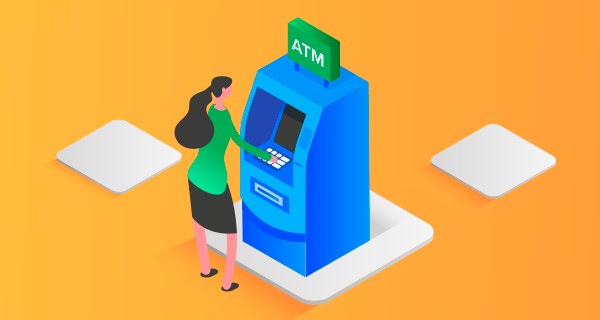Both CFDs and options contracts are a type of financial derivative popular for day trading that have unique features, advantages and risks.
What are financial derivatives?
A financial derivative is a contract between two market participants. The value of the contract will change in relation to the price movements of an underlying asset, and this is why they are called ‘derivatives’, because the contract ‘derives’ its value from something else.
The underlying asset that the derivative is based on could be virtually anything, and derivative contracts exist and are traded for underlying assets including real estate, stocks, bonds, gold, cryptocurrencies, and foreign exchange.
What are options?
An options contract gives you the ability to buy or sell an asset in the future at a predetermined price. Options contracts contain within them all of the information needed to allow an investor to decide on whether or not the option is appealing to them.
For instance, the contract must specify what asset is to be traded, over what time period is the contract valid, and at what price does the holder of the contract have the right to buy or sell. This information can be compared with the price of the option known as the ‘premium’ to decide if it is worth it.
Such contracts can be invaluable to investors as a way of minimising risk. To give an example… let’s look at shares in Google’s parent company, Alphabet.
Let’s imagine a series of negative rumours circulate that the next product launch by Google looks disappointing and uncompetitive next to Apple’s latest offering. Accordingly, an investor who held Google stock might start to worry that the share price will fall after this product is launched.
With the use of options, they can cover themselves against this risk. They simply need to purchase an options contract valid from today until after the scheduled release date of the new product which gives them to right to sell their Google stock in the future at or slightly above the current market price. Having ‘locked in’ this ability to sell the stock at a decent price in the future, they now don’t need to worry about the prospect of the stock price declining anymore.
In fact, if this did happen they would now be on track to make a profit by selling their Google stock not at the new lower price, but at the higher price they guaranteed when they bought the options contract.
NOTE: Contracts giving the right to sell in advance at a fixed price are called ‘puts’, with options conferring the right to buy designated as ‘calls’. In this case, the purchase of a put contract protected the investor from a decline in one of their holdings.
What are CFDs?
CFDs also allow investors to remove or ‘hedge’ some of the risk in their portfolio, but they work in a different way to options.
CFDs are contracts where you agree to exchange the difference between the current price of an asset and the future price of said asset over any period of time. Unlike an options contract a CFD confers no right to the real underlying asset. How much money is made or lost on each CFD trade therefore depends on who predicts the direction of the price movement correctly.
To use the Alphabet example again, if you think the stock will rise after the upcoming new product launch then you should buy an Alphabet CFD. If the price does go up, then you can sell your CFD and a broker or bank like FlowBank that you bought the CFD from will pay you the difference. However, if the stock price falls, you would then be liable to pay the difference between the start and the end price to your CFD provider.
Just like when you buy any other asset, there will normally be a brokerage charge or a bid ask spread to execute a trade to buy or sell a CFD or an option, so you need the price in the underlying asset to move at least as much as the brokerage fee to start making a profit on the trade.
Advantages of options
- Hedging
The main advantage of trading options is that they provide a mechanism through which you can minimise risk. By using options contracts that enable you to profit from a fall in the value of your main portfolio, you are therefore protected against the possibility that you’ll lose too much in a market correction.
- Multi-leg trades
Options are not mutually exclusive. It’s possible and even advised to use combinations of options at any point in time as the best way to reduce the risk you’re facing. Reusing the Alphabet example from above again, if you are unsure if the new product launch will be a success, but you are sure that after the fact the market will move in response to this, you may decide to use a multi-leg strategy known as a ‘straddle’. This is when an investor buys a call and a put option on the same asset. If the market moves in either direction, they can earn a profit, and the price of the unprofitable contract may be more than balanced out by the gain on the correct contract.
- Higher returns
Options contracts can magnify the gains from each trade. This is because with a relatively small outlay (the price of the contract), investors can gain exposure to big swings in asset prices. It is much more cost-effective to use an option to gain some exposure to an asset than it is to actually buy the asset itself, and the returns are accordingly much higher in percentage terms.
Advantages of CFDs
- Easy to buy and sell
A key advantage of CFDs is the quick, simple and cheap way they can be accessed. A wide array of online or in-person brokerages can execute CFD trades on your behalf, and fees tend to be low. The structure of fees for CFDs is also very transparent, making it easy for investors to understand what they are buying and when they will profit from it.
- Make money in both bear and bull markets
Unlike stocks themselves, CFDs mean an investor can profit from market decline, just as much as they can from market rises. Similarly, volatility in and of itself is bad for investor sentiment, but using CFDs can provide further chances to profit from volatility, if you buy and sell at the right time.
CFD vs options: which is best?
Both options and CFDs can be used to minimise risk. For their simplicity and user-friendliness, CFDs can be recommended for those newer to investing. Options are more suitable for more experienced traders, due to the increasing complexity of the strategies that can be used. The range and variety of strategies that can be built using options is their main strength, but this does involve quite a lot of research for the investor to perform.









